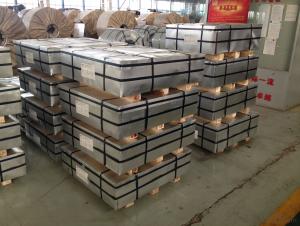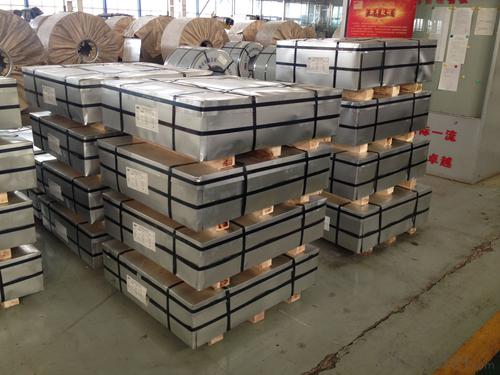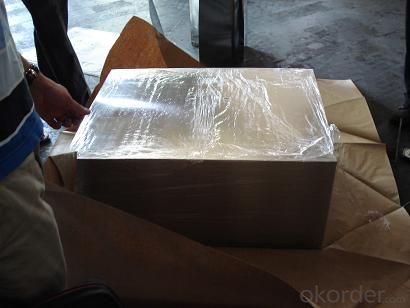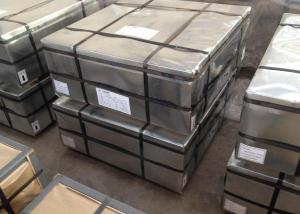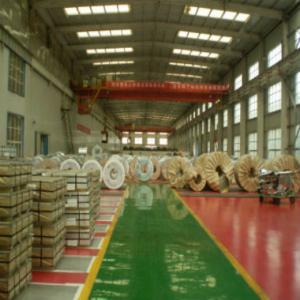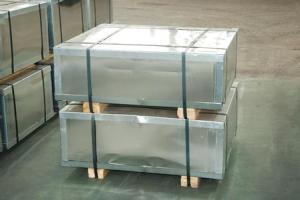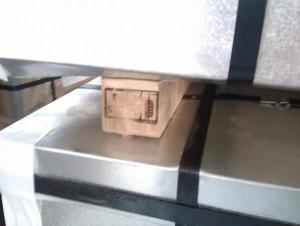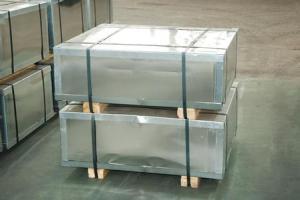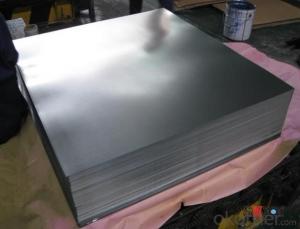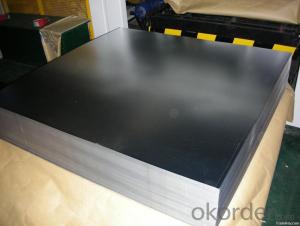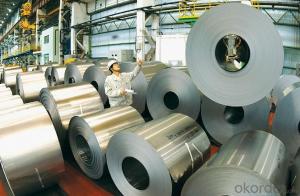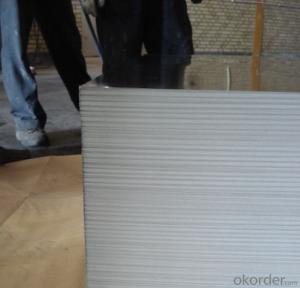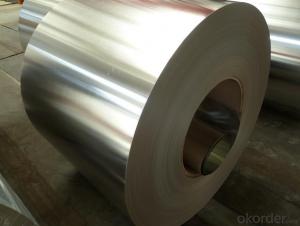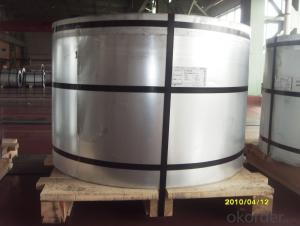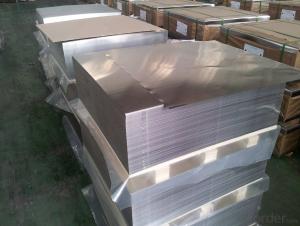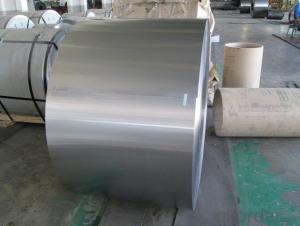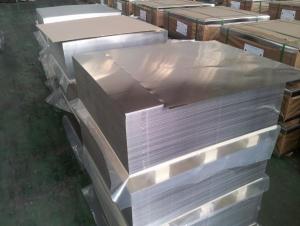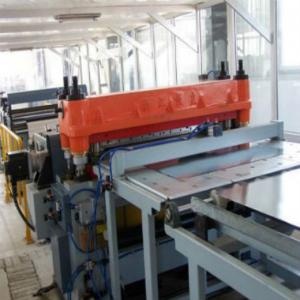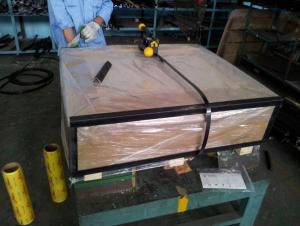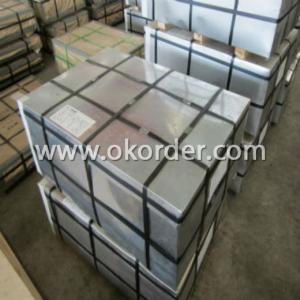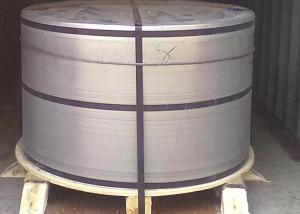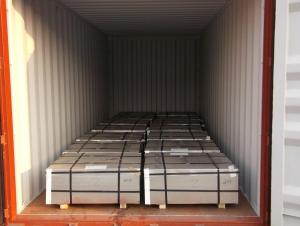Electrolytic Tinplate Sheets for 0.25 Thickness SPCC Sheets
- Loading Port:
- Tianjin
- Payment Terms:
- TT or LC
- Min Order Qty:
- 25 m.t.
- Supply Capability:
- 8000 m.t./month
OKorder Service Pledge
OKorder Financial Service
You Might Also Like
1.Structure of Electrolytic Tinplate Sheets for 0.25 Thickness SPCC Sheets Description
Electrolytic Tinplate Sheets is one of the metal packing materials, which is widely used for making painting cans ,chemical package cans , electrical cable ,battery and metal printing etc.
2. Main Features of Electrolytic Tinplate Sheets for 0.25 Thickness SPCC Sheets
Steady and high quality
Fast shipment
Good experience for export work
For the surface, Plate uniform in thickness,uniform and smooth tin coating, without flaws,rusts,scratch,wave,nick of tin coating etc.
Price competitive
3.Electrolytic Tinplate Sheets for 0.25 Thickness SPCC Sheets Images
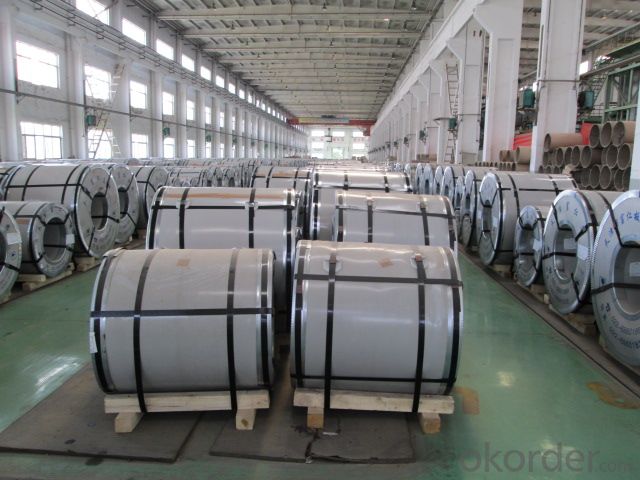
4. Electrolytic Tinplate Sheets for 0.25 Thickness SPCC SheetsSpecification
Standard : GB2520-2000 ,JIS G3303
Steel type : SPCC
Coating : 2.8/2.8
Surface: Bright, Stone ,
Thickness:0.31
Width :600MM~1000MM
Temper : T1~T5
Package: tinplate wrapped completely with an inner cover of plastic or waterproof papers with vorners protected with metal angels.
5.FAQ of Electrolytic Tinplate Sheets for 0.31 Thickness MR Sheets
A. What is the package of tinplate? (Referred as below)
For sheets, thin plastic film + rust-proof paper + metallic cover + metallic angles+ steel band strips + fumigated wooden pallet.
For coil, thin plastic film + rust proof paper + metallic cover + steel band strips + fumigated wooden pallet
B. The surface of tinplate could you supply?
Stone finish, Bright finish, Matte finish, Silver finish
C. What quantity is the minimum order of tinplate?
Usually, the minimum quantity is 25MT. For special case, consult with us.
D. Can it make to be BA or CA for annealing?
Yes, both can do with.
- Q: How is tinplate used in the pharmaceutical industry?
- Tinplate is commonly used in the pharmaceutical industry for packaging purposes. It is often used to make metal containers, such as cans and tubes, which are used to store and protect various pharmaceutical products, including medicines, ointments, and creams. Tinplate is preferred due to its durability, resistance to corrosion, and ability to maintain product integrity by protecting it from light, moisture, and other external factors.
- Q: How does tinplate contribute to the presentation of jewelry?
- Tinplate contributes to the presentation of jewelry by providing a durable and attractive packaging solution. It offers a sleek and shiny surface that enhances the visual appeal of the jewelry, making it more eye-catching and appealing to customers. Additionally, tinplate's ability to be molded into various shapes and sizes allows for creative and customized packaging designs that can effectively showcase the jewelry's unique features. Its protective properties also help preserve the quality and condition of the jewelry, ensuring that it reaches the customers in pristine condition.
- Q: Who knows the process of tinplate production?
- The basic production process of tinplate: pickling cold rolling cut I skim -- > I I I I I of Kaiping tin flat temperingTropical pickling: hot rolled coils must be pickled before cold rolling to produce cold rolling
- Q: How is tinplate coated for furniture?
- Tinplate is coated for furniture by applying a thin layer of tin to a steel sheet through an electroplating process, forming a protective and decorative coating.
- Q: What are the advantages of using tinplate for electrical enclosures?
- There are several advantages of using tinplate for electrical enclosures. Firstly, tinplate offers excellent corrosion resistance, ensuring the durability and longevity of the enclosure even in harsh environments. Secondly, tinplate has high strength and rigidity, providing robust protection for the electrical components inside. Additionally, tinplate is a cost-effective option compared to other materials, making it a popular choice for mass production. Lastly, its malleability allows for complex shapes and designs, providing flexibility in enclosure manufacturing.
- Q: What are the different printing methods used on tinplate?
- There are several different printing methods used on tinplate, including lithography, screen printing, and digital printing. These methods allow for high-quality and detailed designs to be printed onto tinplate surfaces, making them ideal for packaging and decorative applications.
- Q: What are the main growth drivers for the tinplate industry?
- The main growth drivers for the tinplate industry include increasing demand from the packaging sector, particularly for food and beverages, as tinplate offers excellent preservation properties. Additionally, the growing popularity of eco-friendly packaging solutions and the rise in disposable income in emerging economies are contributing to the industry's expansion. Furthermore, advancements in manufacturing technologies and the development of innovative tinplate products are driving the growth of the industry.
- Q: Can tinplate be used for packaging personal care products?
- Yes, tinplate can be used for packaging personal care products. Tinplate is a type of steel coated with a thin layer of tin, making it highly resistant to corrosion and providing a protective barrier. It is commonly used in the packaging industry, including for personal care products such as cosmetics, lotions, and creams, due to its durability, versatility, and ability to maintain product integrity.
- Q: How is tinplate coated for stationery and office supplies?
- Tinplate is coated for stationery and office supplies through a process called electroplating, where a thin layer of tin is applied onto the surface of the metal. This coating provides a protective barrier against corrosion and enhances the visual appeal of the products.
- Q: What are the main challenges in tinplate labeling?
- The main challenges in tinplate labeling include ensuring the label adheres properly to the curved surface of the tinplate, maintaining label legibility and durability despite potential exposure to moisture, heat, or other harsh conditions, and avoiding label peeling or lifting due to the rigidity of the tinplate material. Additionally, achieving accurate and consistent label placement can be challenging due to the irregular shape and size variations of tinplate containers.
Send your message to us
Electrolytic Tinplate Sheets for 0.25 Thickness SPCC Sheets
- Loading Port:
- Tianjin
- Payment Terms:
- TT or LC
- Min Order Qty:
- 25 m.t.
- Supply Capability:
- 8000 m.t./month
OKorder Service Pledge
OKorder Financial Service
Similar products
Hot products
Hot Searches
Related keywords
